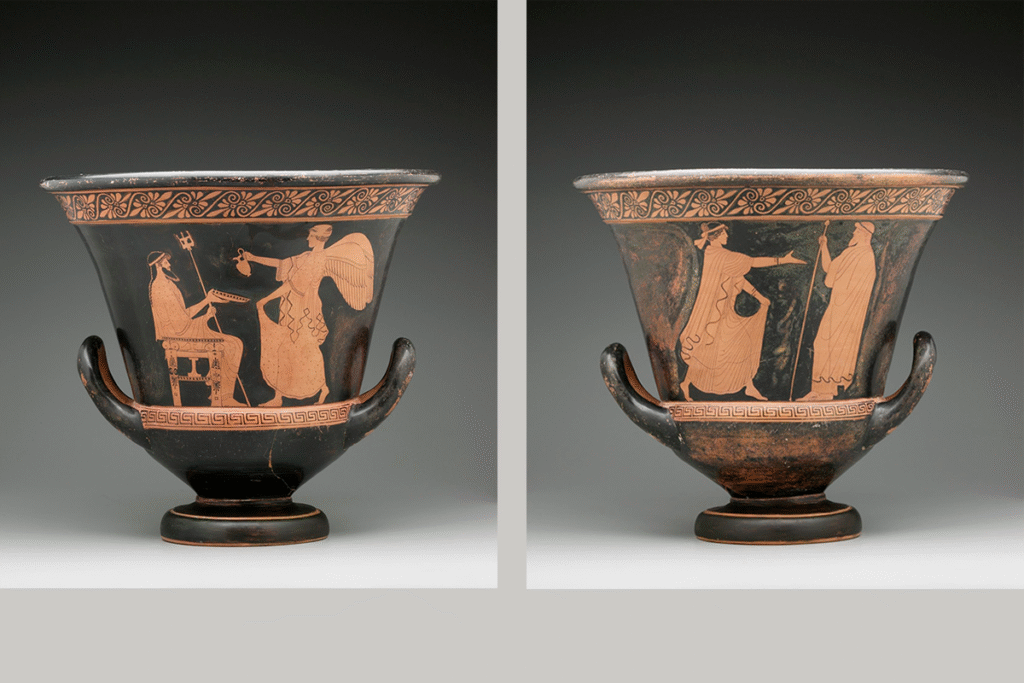Images above a: Nike and Poseidon; b: Woman and Old Man (ca. 470 B.C.) Yale University Art Gallery.
 Visiting the Yale University Art Gallery on February 17th, I found one piece of art that captivated my attention: a red-figure calyx krater, decorated on each side with a scene of Nike and Poseidon, a woman, and an older man.
Visiting the Yale University Art Gallery on February 17th, I found one piece of art that captivated my attention: a red-figure calyx krater, decorated on each side with a scene of Nike and Poseidon, a woman, and an older man.
The artwork described is a red-figure ceramic piece, a calyx krater, crafted by the “Aegisthus Painter”, which dates circa 470 B.C. According to John Walford, the red-figure technique consisted of:
“Mixing clay particles and water, sometimes adding wood ash, the painter created a slip. He would then paint with the slip wherever he wanted the final surface to appear black, either for figures or background. In red-figure paintings, the image was achieved by reversing the way the figure and the background were treated. In this case, the internal features of the figures were painted onto the clay surface, rather than incised through the slip”(1).
The context in which this work was created is ancient Greece, during the height of the classical period. This period is characterized by a flowering of art and philosophy in the Greek city-state. According to the Britannica Encyclopedia, a calyx krater is an “ancient Greek vessel used for diluting wine with water. It usually stood on a tripod in the dining room, where wine was mixed. Kraters were made of metal or pottery and were often painted or elaborately ornamented”(2).
On one side of the ceramic piece, I observed the figure of Nike, the Greek goddess of victory, and Poseidon, the god of the sea. Nike is often depicted with wings, symbolizing swiftness and victory, while Poseidon typically appears with his trident, representing his dominion over the sea. On the other side of the piece is a scene depicting a woman alongside an older man. The figures are shown in a more relaxed and contemplative manner, suggesting a domestic or everyday setting.
Nevertheless, the most striking aspect of this work is how these seemingly disparate scenes come together in the same vessel space. This fusion of the divine and the human leads me to reflect on the relationship between heaven and earth, between the temporal and the eternal. It invites me to contemplate how, through the incarnation of Christ, God Himself became man, thus elevating humanity.
As a brother in formation and a legionary of Christ, I can use this artwork as a starting point to deepen my appreciation of the beauty and richness of my faith. I can invite the faithful to consider how, in Christ, the Word is made flesh. This artwork reminds me that in the Catholic faith, I find answers to my most profound questions and the promise of eternal life in communion with God, the Catholic Church, and even in the beauty of pre-Christian art.
Footnotes
- J. Walford, Great Themes in Art, Prentice All, China 2001, 81.
- Britannica Encyclopedia, «Krater», January 4th, 2022, in https://www.britannica.com/topic/krater (Referenced on 17 February 2024)



